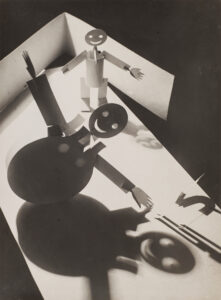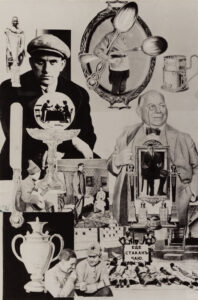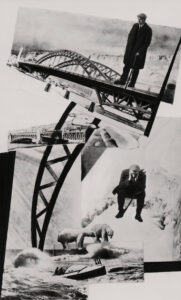Alexander Rodchenko
Russian, 1891—1956
About
Alexander Rodchenko
Russian, 1891—1956
Alexander Rodchenko was already known as a painter and sculptor when he denounced easel painting in 1921, and turned his attention to design and photography. As a key figure in the Constructivist and Productivist movements, Alexander Rodchenko was one of the most versatile artists to emerge in the wake of the Russian Revolution, calling for the incorporation of art into everyday life and producing work in many fields including poster design, advertising, furniture design, photography, and film. In 1918 Rodchenko helped found the Museum of Artistic Culture and became its first director. In the 1920s, he collaborated with poet Vladimir Mayakovsky on photographic illustrations for Mayakovsky’s poem Pro Eto, and as co- editors of the Constructivist publication LEF. He worked closely with filmmaker Dziga Vertov, designed posters for Sergei Eisenstein’s film Battleship Potemkin, and was commissioned to design the Soviet Pavilion to the World Exhibition in Paris in 1925. Experimenting with destabilizing angles, sharp contrasts, photomontage, and the incorporation of text, Rodchenko approached photography as a means of communicating ideas, and the artist became an “artist-engineer.” He was included in the pioneering exhibition of the “New Vision” photography, Film und Foto in 1929, but when the political climate shifted, Rodchenko was expelled from the October artists group that he’d helped found in 1928. He returned to painting in the late 1930s.


